
Mushrooms are a subtle staple in Japanese cooking and easily spotted while on hikes thanks to the country’s humid climate. While we can’t recommend foraging your own (unless on a guided tour or well-practiced), luckily it’s easy to enjoy Japanese mushrooms in local cuisine or when cooking at home. Known for their earthy, umami flavor (the 5th flavor identified in Japan as being deeply savory) mushrooms are commonly added to rice or soups or are eaten grilled or in hotpots.
Different types of Japanese Mushroom

There are plenty of wild mushrooms in Japan but when it comes to edible-varieties, there are a handful of delicious ones to keep an eye out for. If you take a look in Japanese supermarkets, especially in autumn, you’ll spot plenty of these and can pick them up for a few hundred yen a pack. In restaurants, shiitake and takenoko are often served alone, while others make appearances in mixed dishes like hotpot or mushroom miso soup. Here are some of the common kinds to look out for:
Shitake Mushrooms
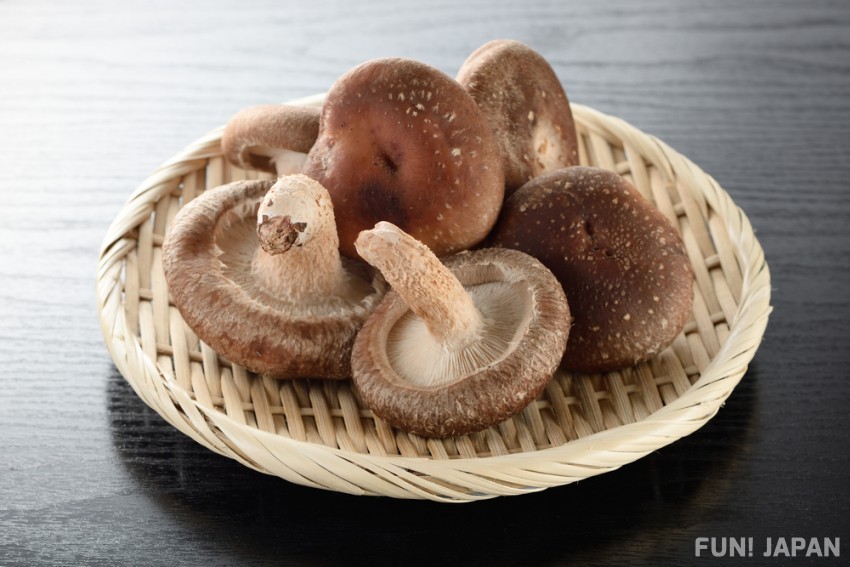
One of the most popular mushrooms worldwide, shiitake are often dried for a deeper flavor. In Japan, however, they are commonly eaten freshly-cooked and are not as expensive as you may expect. Given their depth of flavor, they are often used for broth and have a distinctive woody smoky flavor. The mushrooms are high in vitamins D and B as well as being a good source of potassium.
Enoki Mushrooms

Long and thin, enoki mushrooms are easy to spot and are often sold in thick bunches. The pale white mushrooms have very small caps and their length makes them a great addition to soups or hot pots as they become noodle-like. They have a very mild flavor which, when fresh, have an almost fruity hint to them.
Matsutake Mushrooms
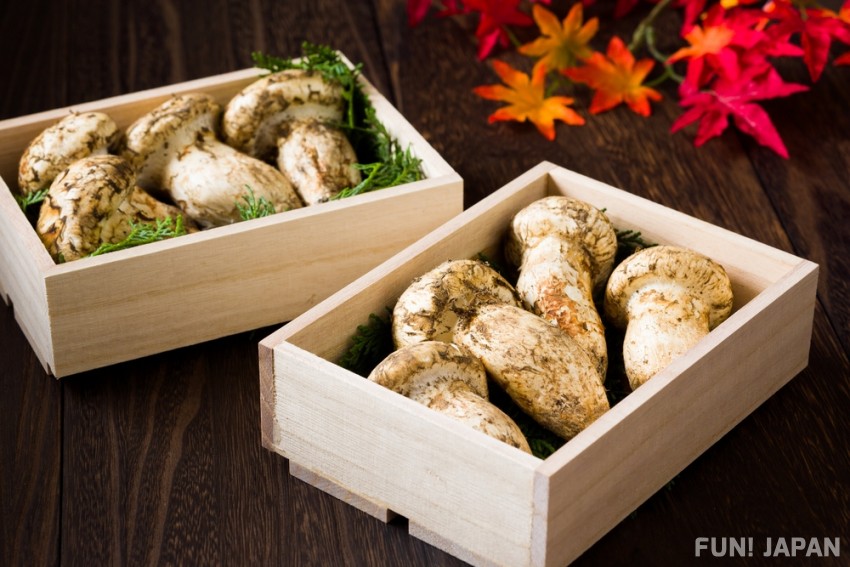
One of the fanciest fungi in Japan, Matsutake (meaning pine mushroom) can be sold for over $1000 per kg. This is because they can’t be cultivated and can be difficult to find. They’re known for their strong, almost spicy aroma and are often served grilled or in rice with mild seasoning. If you head to the high-end department store depachika (basement food sections) you can see the exorbitant prices - although they can be found at a reasonable rate in local supermarkets.
Maitake Mushrooms

Known as hen-of-the-wood elsewhere, the riffle-like maitake mushroom is a common and popular option in Japan. Maitake means ‘dancing mushroom’ and its shape lends itself well to tempura as it can be pulled apart easily. They have a relatively strong, earthy flavor, so they also work well in soups and broths.
Eringi Mushrooms
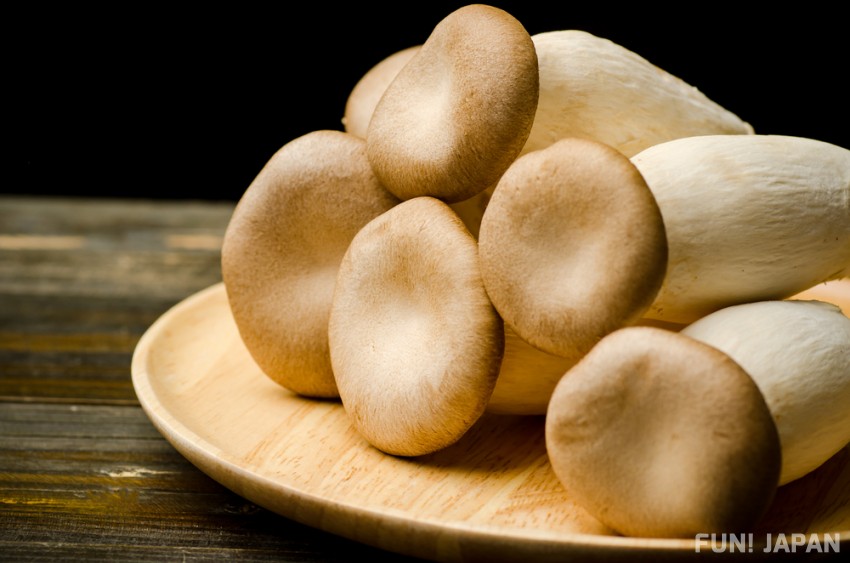
While not native to Japan, the eringi mushroom is one of the most common on Japanese supermarket shelves. Known as the King Oyster mushroom abroad, the chunky stems and light brown caps are mildly flavored but fantastic from grilling. Given how quickly mushrooms cook down, these are great when you’re looking for a little substance.
Shimeji Mushrooms

Another popular supermarket variety, shimeji are a versatile mushroom with a putty flavor. While they can be a little bitter when raw, this disappears with cooking and you can enjoy their added crunch. Thanks to their size and versatility they go well in a wide range of dishes, from soups to to udon to pasta sauces, as well as being added to stir-frys for added taste and texture. They are high in protein, vitamin-D and zinc, so they’re a healthy option too.
Bonus Mushroom: Kinoko no Yama
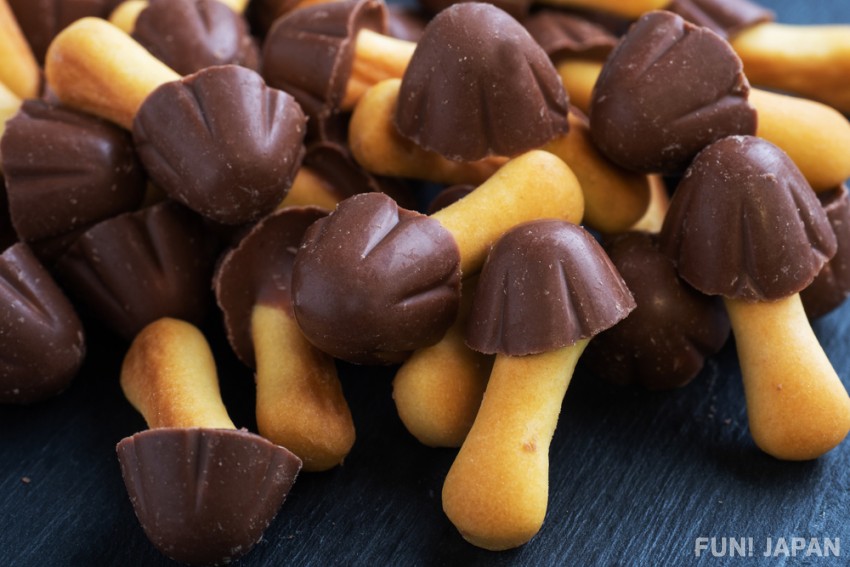
A little different from the others, kinoko-no-yama are a wildly popular Japanese snack based on their real-life counterparts. Crunchy biscuit stems are topped with soft milk chocolate caps are perfect for a treat. There is an everlasting debate as to which is best - the Kinoko no Yama (meaning mountain mushrooms) or their bamboo-shaped alternatives, but we’re definitely team-mushroom.
Mushroom Cuisine
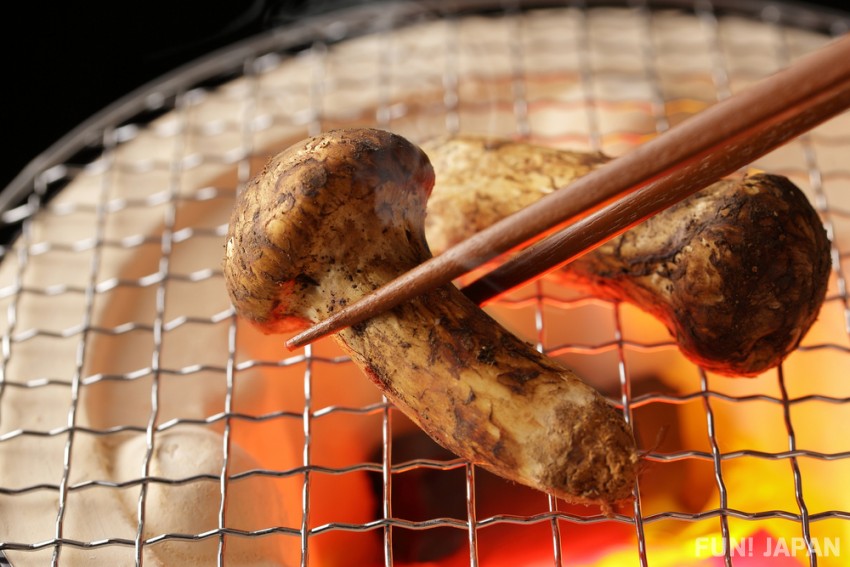
Mushrooms are often eaten in autumn with many simple dishes focusing on the delicate flavor of the mushrooms. Kinoko gohan (mushroom rice) is a popular option and features steamed, seasoned rice with sliced mushrooms (often shiitake or shimeji, but any can be used). Mushrooms are also a popular addition to hotpots like sukiyaki or nabe. Cooked in broth, they add to the soup and absorb the flavor, becoming deliciously meaty in the process. For high-quality mushrooms like takenoko, it is common to enjoy them as tempura or grilled with butter at teppanyaki restaurants or izakaya. In general, when mushrooms feature in Japanese cooking it is relatively simple as the subtle flavors are given center stage.
Recipes for mushroom dishes

If you want to try making traditional Japanese mushroom recipes at home it’s very simple. If you’re in Japan, look out for the varieties mentioned above - they are all generally very cheap, although takenoko and shiitake can be a few extra hundred yen (or a few extra thousand if you find the highest quality!).
Kinoko Gohan (Mushroom Rice)
Rinse two cups of rice and add two tablespoons of soy sauce, two of sake, one of mirin and a pinch of salt along with two cups of water. Add in 300g of sliced mushrooms (try fresh shiitake or shimeji) and cook on the usual white-rice setting. When it’s finished, stir and serve - you can add green onions or pepper if you like.
Soy-butter Matsutake Mushrooms
This is a very simple way to enjoy mushrooms and while it works nicely with matsutake thanks to their meatiness, it can be used with any mushroom variety - especially eringi. Simple slice up your mushrooms (or keep whole if smaller) and fry with garlic before adding enough butter and soy sauce to coat, but not to create a sauce. Combining the richness of the butter with the umami flavor of soy sauce is a popular classic, so enjoy!
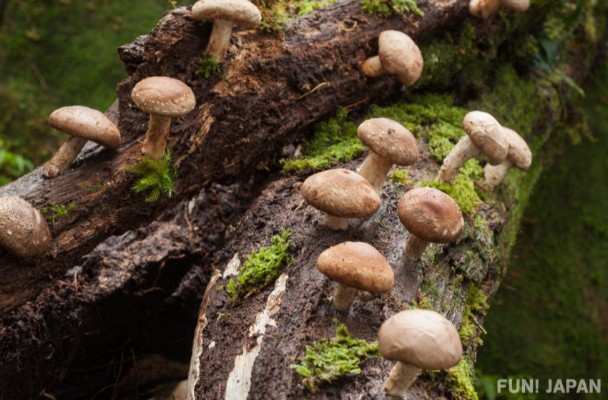
Comments